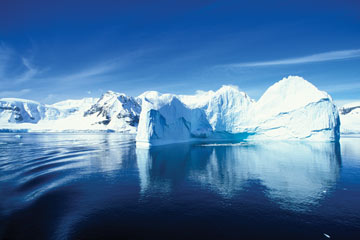|
NEWS NOTES
Models made Antarctica warmer
Antarctica has been warming slower than current models suggest it should — and a new study by Andrew Monaghan and colleagues at the National Center for Atmospheric Research in Boulder, Colo., may explain why.
Comparing observed temperature and snowfall data collected from ground weather stations and Antarctic ice cores with computer simulations of climate over the past 100 years, the scientists found that the computer simulations were overestimating the amount that temperatures on the continent would increase as global temperatures increase. The observed temperatures rose by 0.2 degrees Celsius over the past century, but climate models suggested there should have been an increase of 0.75 degrees Celsius, they reported April 5 in Geophysical Research Letters. Those climate simulations were among the models used to assess Antarctic warming in the Intergovernmental Panel on Climate Change’s (IPCC) Fourth Assessment Report, released in February 2007.
The error, Monaghan and his colleagues suggest, may have been the result of the models’ overestimation of how much water vapor would be in the Antarctic atmosphere. The hole in the ozone layer over Antarctica, they wrote, may have altered wind patterns and thus kept warmer air away from the surface. The models did correctly assess changes in snowfall over the continent, however.
The new study also suggests some wrinkles in projections of sea-level rise, which the IPCC estimated would be 18 to 59 centimeters this century. Whether the Antarctic ice sheet will grow or shrink over the next century depends on the opposite effects of predicted increased snowfall in Antarctica and a warmer ocean and rising seas. Figuring out the answers to those questions, the authors wrote, will lead to better models of future change.
Links:
Earth Science World Image Bank

 Subscribe
Subscribe



